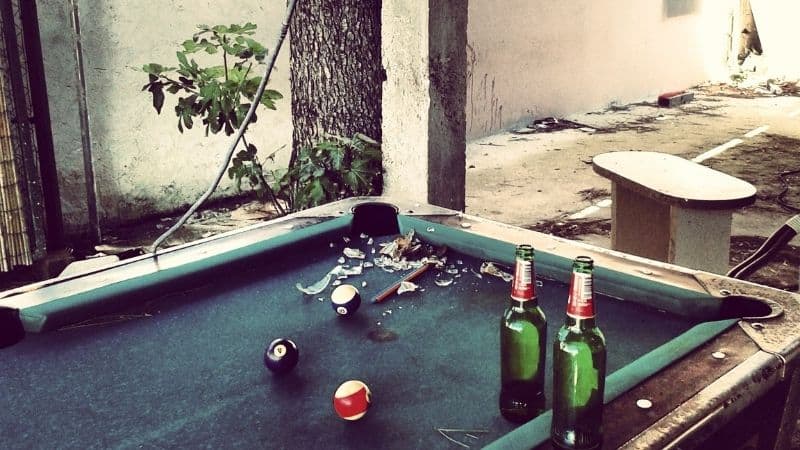Replacing or repairing a pool table’s felt isn’t a cheap endeavor, which is one of the many reasons you don’t want mold growing on this material. Not only is pool the table felt mold unsightly, but it can also affect the playability of the table, causing the felt to degrade and damage and/or contaminate other parts of the table. While we highly recommend you do everything in your power to avoid mold growing on your pool table felt, once it’s there, the only thing left to do is remove it.
In this article, we will give you some tips for removing mold from your pool table’s felt safely and effectively so that there is no trace left behind of this damaging growth, and you can restore your table to its former glory. In addition, we’ll talk about cleaning techniques, products, and services that may help you get rid of or prevent future mold growth.
Be Proactive in Your Mold Removal
While this might seem like common sense, it’s worth mentioning that the longer you allow mold to linger and spread on your pool table, the more likely it will damage the felt and other components beyond repair. Therefore, the first step to this process is to be proactive.
It is always best to remove mold from a pool table’s felt immediately after you’ve noticed its presence. This is because mold can spread across a surface within 24-48 hours after the growth has been exposed to water.
Typically, mold will grow on a pool table that has been stored somewhere humid and damp, such as a basement or a storage unit. If your table has been in one of these areas, check it thoroughly for mold and be proactive about removing any you find immediately. The longer you wait, the more damage the mold will do to the pool table and the more money you’ll spend on repairs.
A good preventative measure would be to ensure your table is stored in a dry room with a controlled humidity of 40%-60%. This will help ensure the wood, leather, and other materials on the table won’t dry out and crack, but there isn’t enough moisture to support mold growth.
Use a Home Remedy of Table Salt or Baking Soda With Vinegar or Lemon Juice
When it comes to removing mold from your pool table’s felt, you’ll generally want to avoid typical cleaning products, as they consist of harsh chemicals that will only damage or stain the felt further. Instead, your best chance at thoroughly removing the mold without damaging the surrounding felt is to use a home remedy.
There are two common home remedy options for cleaning mold from pool table felt. The first is to mix about a tablespoon of table salt with just enough lemon juice to create a thick paste. The second method is to pour baking soda and straight vinegar onto the affected area.
Both of these pairings should work to remove the mold, so opt for the materials you have on hand or are most comfortable using.
Before applying the lemon juice and salt paste, or baking soda and vinegar, we recommend you use a soft brush or fabric-friendly vacuum accessory to try and remove as much mold as you can from the felt.
Afterward, apply the paste of baking soda with just enough vinegar to saturate the molded area. Lightly rub these remedies into the contaminated felt, and then let them sit on the felt for ten minutes. Once the time has passed, use a soft, microfiber towel and warm water to dab away the remedy and mold.
Re-felt the Table
We recognize this probably isn’t the solution you were looking for. But, sadly, there’s no denying the fact that frequently when a pool table’s felt has a significant amount of mold growth, the best thing for your table, and ultimately, your health, is to remove it entirely.
Re-felting a pool table will ensure there are no traces of mold left behind that could potentially spread or continue to damage the felt and other components. The cost of re-felting varies depending on the table size, type of felt, and, if you’re re-felting it professionally, the company of choice. Generally, it will cost table owners anywhere from $265-$560+.
Once mold has started to grow on a pool table, it is extremely difficult to remove it all, which is why re-felting might be the most time-efficient and safe option. Even if the mold doesn’t spread much further on the table felt, the particles could easily stick to your clothing, pool accessories, or other surfaces and spread throughout the house.
Additionally, anyone in the same room as a mold-infested pool table could breathe in the mold, which is a serious health hazard. Therefore, while we encourage you to at least attempt the home remedy, especially if there is only a small area of mold growth, you might find re-felting unavoidable.

